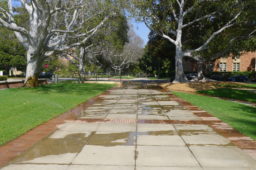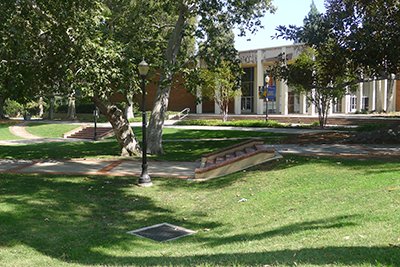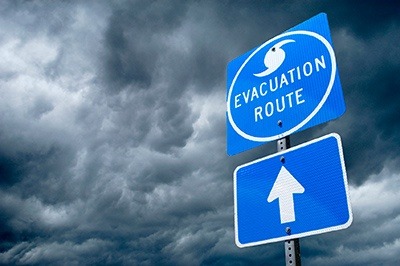The California State Water Resources Control Board (State Water Board) is expanding the Phase II Small Municipal Separate Storm Sewer System (MS4) Permit, which aims to reduce or eliminate stormwater pollution, to include K-12 schools and community colleges. Once the amendment is adopted, anticipated to be in mid-2020, school districts and community colleges will have five years to comply with the Small MS4 Permit.
In order to comply, you’ll need to assess the current state of any harmful materials that may be carried through storm drain systems from your campus into water bodies, create a plan to reduce or eliminate runoff, and educate staff and the public. Schools that do not comply with the Small MS4 Permit will be subject to scrutiny by the State Water Board, third parties, and concerned citizens. On the plus side, there are desirable benefits of a campus stormwater program, like improving student, staff, and community well-being, reducing flooding, providing education opportunities, and improving community engagement.
Here is some background on the program, how it will impact your campus, and how you can start taking steps now to ensure compliance in the future.
Background on the Small MS4 Permit

Under the Clean Water Act, U.S. Environmental Protection Agency issued stormwater regulations in 1990 that required the State Water Board to issue National Pollutant Discharge Elimination System (NPDES) stormwater permits to large municipalities, industries, and construction projects. In 2003, the State Water Board adopted the Small MS4 Permit to regulate small municipalities (with a population less than 100,000) and non-traditional entities, which included state universities, hospitals and medical facilities, fairgrounds, state parks, and more. In 2020, the Permit is being revised and will apply to K-12 school districts and community colleges.
Key to success: Creating a thorough Stormwater Management Plan

The place to start when preparing to comply with the Small MS4 Permit is by developing a Stormwater Management Plan (SWMP) and identifying Best Management Practices (BMPs) in that plan. A SWMP documents your stormwater program and details the controls, or BMPs, that your district is putting in place to ensure you’re protecting the environment and community from the impacts of stormwater runoff.
Before developing a SWMP and BMPs, assess your current conditions to understand how and where stormwater is being drained and discharged, and identify anticipated pollutants such as oils, fertilizers, bacteria, pesticides, or trash. Your SWMP should include:
- An overview of your storm drain system, including locations and conditions of storm drain infrastructure such as catch basins, pipes, and ditches, and how you plan to manage and prioritize the clean out and/or improvement of these systems.
- Areas on your campus that may be sources of pollutants and what types of pollutants are present. Consider how your science labs or maintenance teams are currently discharging potential pollutants.
- Strategies to reduce or eliminate the discharge of those pollutants. Your strategies will include BMPs that will help reduce or eliminate runoff, control the sources of pollutants, or treat the contaminated water before it discharges from your campus.
- Good housekeeping practices, such as keeping your campus clean of trash, green waste, and sediments, or storing chemicals indoors or under cover, to prevent contact with stormwater.
- A plan to educate district faculty and staff about your new stormwater policies and ways of reducing pollution, as well as outside vendors and contractors who will work at your school to ensure they follow your BMPs. There should be a public outreach component in your plan that allows you to inform the public about sources of water pollution and establishes education tasks based on water quality problems, target audiences, and anticipated task effectiveness.
- Designated staff who will be responsible for stormwater compliance in your district across different departments.
- Whether your campus will need to build stormwater treatment BMPs. If so, you should seek engineering help to design BMPs that meet permit standards.
Other considerations when developing and implementing your SWMP
There are other considerations for your district to consider in order to comply; some of the most common include:
- Construction: Sediment and building products may release pollutants, so consider stormwater management on all construction projects. Whether you’re building a new gymnasium or paving a parking lot, your project will require a construction site runoff control program that includes planning, BMPs, inspection, and enforcement of procedures. You’ll also need post-construction BMPs to make sure the final project is stable and clean.
- Groundskeeping and maintenance: Evaluate how you maintain your district’s campus, landscapes, and sports fields to minimize pollutant runoff. These activities could include repairing a sidewalk, mowing lawns, applying pesticides, and flushing hydrants. You’ll have to rethink the way you design your landscape, such as using water-wise, native vegetation. Stormwater runoff should even be considered for something as simple as hosing down a parking lot, so your annual carwash fundraiser will need to implement runoff and cleanup measures or be moved to a grass or turf field.
- Reporting: Your district will be responsible for submitting an Annual Report to the state’s Stormwater Multiple Application and Report Tracking System (SMARTS) database that includes your past year’s stormwater prevention activities and confirmation that your program is compliant.
- Budgeting:
There are costs associated with the design, planning, and maintenance of a successful stormwater program – now is the time to start determining how much funding to allocate for your stormwater program.
Next steps for your campus
It’s not too early to prepare your campus and get ahead of this regulation. If you don’t know where to start or run into questions as you develop your Stormwater Management Plan, feel free to reach out to me.
In the meantime, you can stay on top of any updates from the State Water Board by subscribing to their email updates list.
Published: 11/19/2019
- Education, healthcare, and cultural institutions
- Higher education
- K-12 and independent schools
- Water resources
- Stormwater
Author

Service Leader, Water Resources




